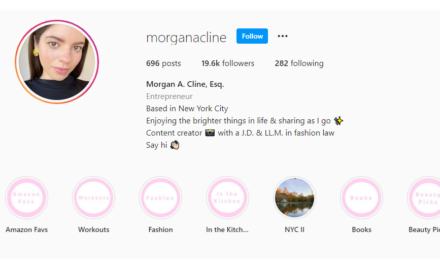I became a content creator because I love teaching. I started monetizing with Adsense and affiliate links.
But the true revenue fun began when I added paid guides and courses, a natural extension of my free how-to content. They have a higher profit margin.
However, paid online courses aren’t easy to launch successfully. They take time to create and market. For entrepreneurs new to online teaching, you don’t yet have the experience or may not have the money to invest in producing a full-length course, think about a webinar strategy first.
Do a webinar before creating a full-length course. You gain experience and test audience interest at a minimal cost of money and time, says @MrCabasVidani. #CreatorEconomy Share on XTo help, I have a lean startup idea that I use myself and with my clients to mitigate risks and maximize the upside.
Don’t go all in with your online course
When some creators expand their revenue streams with online courses, they want to create the ultimate course, an enormous collection of videos covering everything their students could need.
This is the wrong strategy.
It would require so many decisions. You would get stuck in a maze of infinite choices – pricing, length, format, copy, delivery platforms, etc. You would have to make too many assumptions about your audience’s needs. Production would take forever. If you managed to launch it, the final sales likely wouldn’t justify the huge time investment.
Creating the ultimate course as your first paid online offering is a mistake, says @MrCabasVidani. #Webinars #ContentBusiness Share on XMy first course was about Lightroom, a photography post-production software. It covered every piece of the app. I made about $4.8K in the launch week. For me, it was amazing. Though I didn’t track how many hours it took to record and edit the videos, I’m sure the profit per hour was not so exciting.
Plus, most first attempts often don’t get memorable results and many fall flat.
So let’s work on a better strategy where you can minimize the probability and the cost of failure.
Start with a webinar strategy
A short webinar is the opposite of what all my clients envision. But it’s the leanest way to create and sell a course. What do I mean by “a short webinar?”
It’s a live lesson – with time for questions – that runs 60 minutes or less.
It works well for content creators who can explain things live. If that’s not you, practice with friends, family, or beta testers from your community until it is you.
TIP: Pick an evergreen topic so you can sell the recording later.
Pre-sell the course
You can shrink the webinar’s risk by stealing a tactic from smart content entrepreneurs like Jeff Walker, who created a product launch formula: Sell the webinar before creating it.
It works this way:
- Set an early bird price.
- Write a landing page to promote the webinar and early bird pricing.
- Send a promotional email with your landing page link to your email list (or at least part of it to test the idea.)
- If not enough people buy to merit the webinar’s creation, refund those who paid and cancel the webinar.
- If enough people buy, go on with the webinar.
If you end up refunding tickets, explain why you’re doing it. You don’t want to risk losing your audience’s trust with the cancellation. Explain what you learned, survey them and ask what about the topic interested them and what didn’t. You also can survey non-buyers on your list to identify potential fixes.
Pre-sell tickets to your webinar before you create it. If interest is too low, you never need to produce it. Cancel it and issue refunds, says @MrCabasVidani. Share on XPrevent perfectionism through improvisation
When you record a course, you can take all the time you want to polish every single word, every single scene. In a live webinar, you prepare the slides and the outline, but you shouldn’t read a script. Thus, you won’t be able to perfect every single word.
You’ll disarm your perfectionism, forcing yourself to improvise.
Warm up your audience with a lower price
Many audiences need to take small steps to build their trust before they pay for higher ticket products. A low-priced webinar can make the first conversion easier. Think about charging $50 or less per person.
Of course, this is not written in stone. Sometimes the right product or service sells well, independent of price. But many creators don’t have the confidence to know what the right product or service is. An inexpensive product removes this obstacle.
Make it live to increase conversions
Scarcity is probably the most powerful conversion lever. If people want to interact during the webinar, they must be there at the right date and time. A live webinar could increase conversions because it embeds scarcity.
The live aspect also can be an obstacle because some people won’t buy because the time and date don’t work for their schedule. You can mitigate this problem by doing the live webinar several times.
Build the webinar
To produce your webinar, you should need some equipment:
- Webcam (at least 1080 pixels)
- Decent lighting
- Webinar platform with a recording feature
- Sales and delivery platform.
You can use this same equipment to expand your online course revenue stream.
Start the revenue stream [example]
I’m working with a nutritionist. He had two topics in mind for his courses: gut health and reading food labels to make healthy choices.
He set up a video recording studio and planned a recording marathon. But before he did, we trimmed down his idea. A lot.
The webinar was titled Understanding Yogurt Food Labels. You wouldn’t imagine, but there’s a lot to say. Because he knows the topic well, it will take only a few hours to put together the webinar content.
He wrote an outline. Now he’s writing the landing page. He’ll sell it at an early bird price of $15 because we don’t have a clue about his audience’s willingness to pay. His email list will receive a link through Gumroad. Those who buy tickets will receive a Zoom link shortly before the webinar.
We will then upload the recording on Gumroad as a standalone product.
Launch online courses with better success
I hope this webinar strategy will help you build your first course more quickly and effectively. It will teach you a lot. And maybe provide some cash to fund the next product.
You also can use the webinar-first strategy for future course launches, too. It’s an inexpensive way to test your market and begin your marketing for a longer course.
About the author
Alberto has been a content entrepreneur since 2010, writing posts, producing videos and podcasts, and selling ebooks, courses, and services. Now he helps content creators become consistent through coaching at https://www.coach.me/albertocabasvidani.










